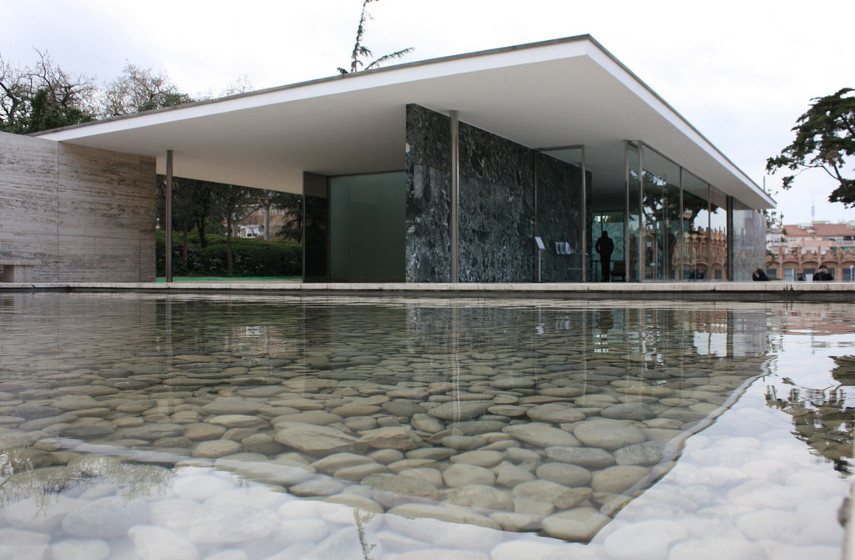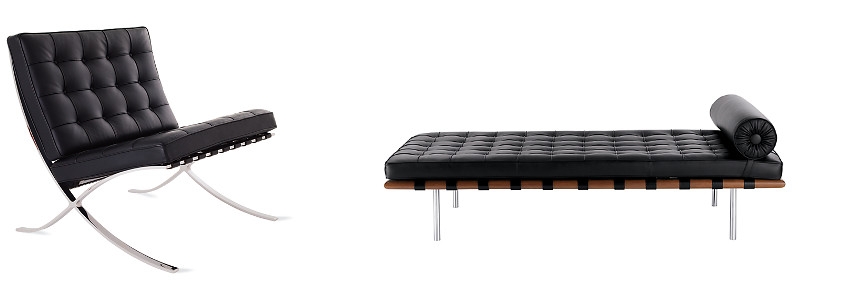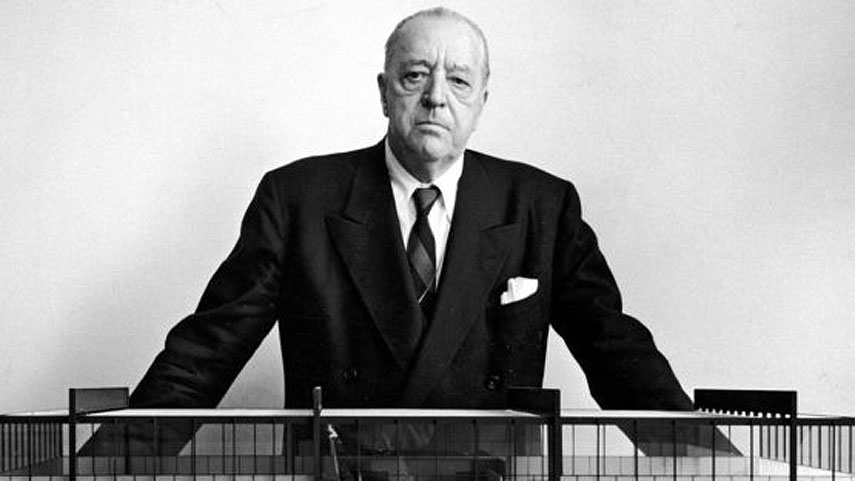Ludwig Mies Van der Rohe
Ludwig Mies van der Rohe was one of the greatest architects of the 20th century. His amazing philosophy of open space and clean surfaces, combined with Bauhaus school, made his buildings one of the most elegant constructions of post-World War I. He was usually addressed just as Mies. Mies firmly stood behind his opinions and did not compromise for the sake of quiet negotiation. Because of his opinionated and passionate nature, we now have amazing monumental houses and buildings, such as Barcelona Pavilion, Farnsworth House, S. R. Crown Hall and his famous chairs of Bauhaus design.

Early Works
Mies van der Rohe was born in Aachen, Germany in 1886. Since he was just a boy he started expressing his affinities towards creative arts and construction. He worked with his father in their family stone-carving workshop. His next job was in Berlin, where he worked in interior design, before pursuing architecture. Mies was an apprentice in the studio of Peter Behrens for four years. Being a part of architectural studio gave him an opportunity to be exposed and to stay informed about theory, practice and trends in German architecture. His talent was quickly recognized and he started working individually. First, it was just about redesigning houses, next came the larger projects. Quickly adapting to new challenges, he simultaneously wanted to adapt to new social circles he was in. He took his mother’s last name Rohe and gave himself a title van der. He renovated aristocratic houses in Germany, sticking to the modern form of the purity and openness. The elements had to be simple and cubic. There was no room for complex, messy and piled up details. He disliked ornaments, irrelevant to the functionality and pure relationship between men and nature.
Barcelona furniture is the great example how Mies Rohe look on interior complements the exterior

Ludwig Mies van der Rohe – Barcelona Chair (Left) / Barcelona Couch (Right)
Furniture Design
Another thing important for his biography is his incredible work on furniture design.
The most famous piece he designed is the Barcelona chair. He made it in collaboration with Lilly Reich and made it as a complementary piece to Barcelona Pavilion. There is also a table that goes in the pair, and both are rich in modern features. Mies is also known for the Tugendhat chair and the Brno chair. The materials he used for chairs are pure leather and mixed materials of rich texture. For frames and support, Mies used chrome and designed them only anchored at one end, so they would give the notion of buoyancy. They are designed to look delicate, but they are firm and timeless, as all of his architecture work is. The furniture is made to be used by a modern man with classical taste. The classical is supported by his words God is the details, and the luxurious materials he used. The modern is in Mies’ sense of proportion, and the ability to deliver such a complicated, yet visually simple structure. The design of the chairs looks like the project for construction systems. Everything he did, he did with the same dedication. Taking care that no space is left blocked, and always emphasizing that less is more, he changed the way modern architecture exists today and made the timeless and immeasurable contribution to cities, art, science, and culture.






